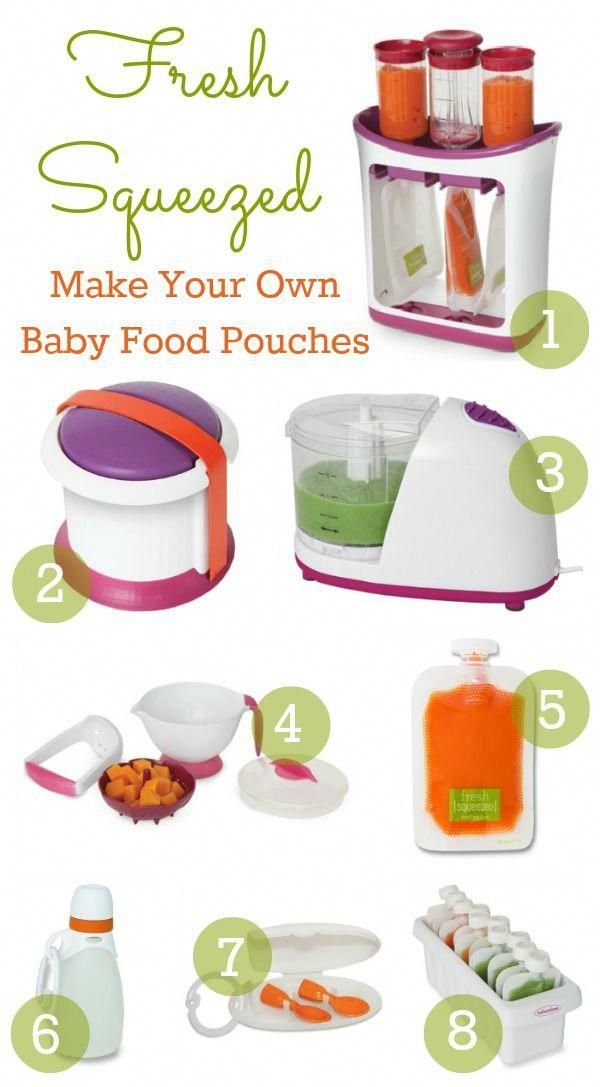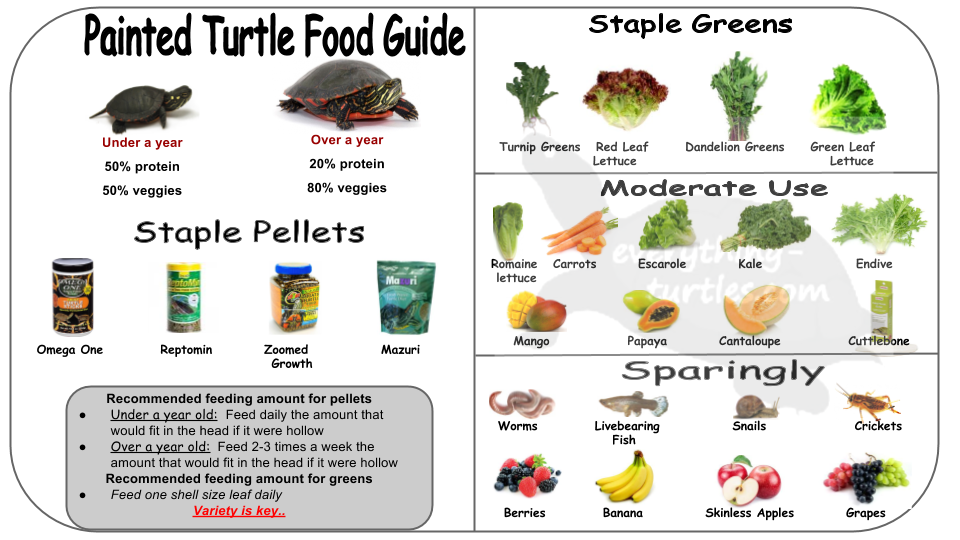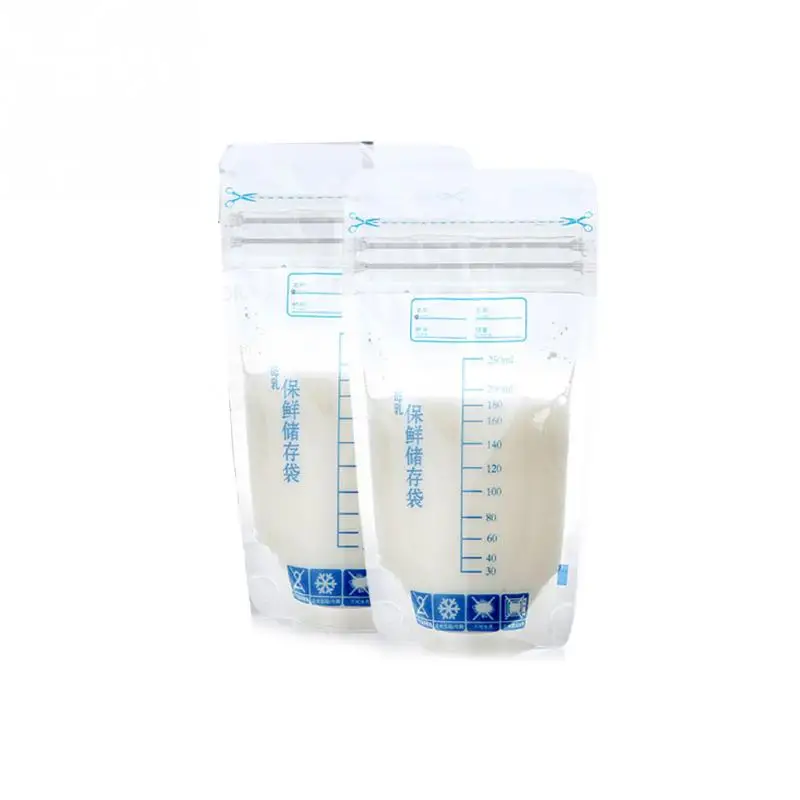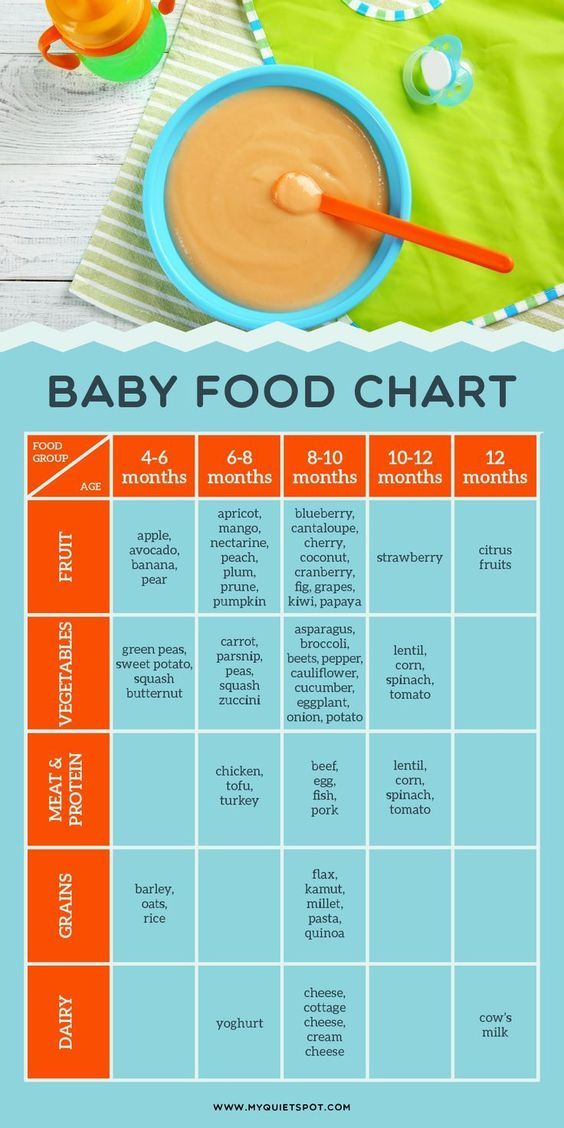Baby feeding pouches
5 Tips for Pouch Feeding by Pediatric Nutritionist Jill Castle – Once Upon a Farm
Pouches have taken the world of baby food and feeding by storm. They’re convenient, sterile, and tout a variety of interesting flavors and food combinations. They are certainly growing in popularity.
Pouches are easy to use and give flexibility to parents, offering portable nutrition that’s in sync with the busy lifestyles many families have today. They also promote self-feeding and independence. All good stuff.
As baby food pouches become more popular, however, parents want to make sure they fit them into the overall goals for their child’s nutritional needs and developmental progress.
-
Advance your little one along with feeding skills. By a year of age, your baby should be self-feeding with utensils (and his hands), drinking out of a cup and eating a wide variety of flavors and textures.
To this end, I’ve got a few pointers for using baby food pouches so your baby becomes the healthy, self-feeder they were meant to be!
5 Tips for Parents Who Give Their Little Ones Baby Food Pouches
1.The original intent when baby food pouches came out on the market was to use them with a spoon. Parents could squeeze a bit of baby food onto the spoon and feed it to their infant. Today, the spoon is skipped and sucking from the pouch is the norm. This misses the opportunity to teach baby how to eat off a spoon and use his mouth muscles to manage, propel and chew food.
All babies need diversified texture so they learn to chew, self-feed and advance their feeding skills. Babies who do not advance to more textured food by 9 months of age have been shown to have a greater likelihood of having feeding problems later.
Using a pouch won’t hurt your baby if you keep moving forward with feeding skills, such as introducing finger foods, offering the spoon, and encouraging self-feeding.
2. Mix in More Texture Add textured foods such as chopped and cooked veggies, rice, noodles or shredded meats in a bowl with baby food from pouches to increase the texture experience. These varied textures will stimulate your baby’s sensory system and train his mouth muscles to handle a wide range of food textures.
These varied textures will stimulate your baby’s sensory system and train his mouth muscles to handle a wide range of food textures.
No matter what, when, or how you feed your baby, he or she needs to be monitored to watch for choking and to continue to enhance the parent-child connection and bond.
4. Start Finger Foods Between Six and Eight MonthsWe loved the convenience of the pouch, but it's still important to introduce finger foods. Between six and eight months, babies develop their hand grasp and can hold a finger-shaped, or long, thin rectangle of soft food, such as buttered toast, soft cooked vegetables like sweet potato, or ripe fruit like banana or avocado. By eight months, the pincer grasp emerges, and your baby can pick up small bits of food with his thumb and forefinger.
At this stage, introduce finer foods like strips and small cubes of soft food to your baby’s meal routine. Use this opportunity to introduce singular veggies and fruits so your baby can appreciate the flavor and texture of these foods.
Use this opportunity to introduce singular veggies and fruits so your baby can appreciate the flavor and texture of these foods.
5. Always Sit to Eat
This is good advice for any child at any age (even adults), but especially for the new eater who is learning to handle food. Sitting for meals and snacks helps children pay attention to their food and eating, learn to eat mindfully, and stop eating when full.
- Written by Jill Castle, MS, RDN
Jill Castle is a registered dietitian and childhood nutrition expert who helps families navigate the ins and outs of feeding children from high chair to high school. She is the author of The Smart Mom’s Guide to Starting Solids, and the co-author of Fearless Feeding: How to Raise Healthy Eaters from High Chair to High School as well as many other resources for parents, including online trainings.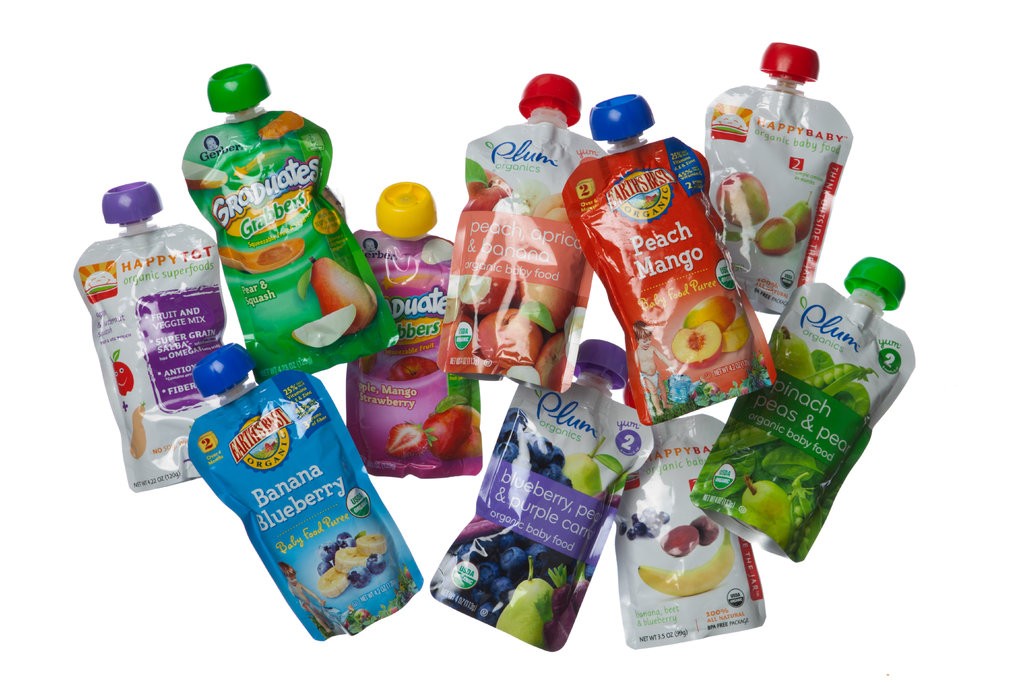 You can find Jill’s blog, podcast and other resources on her website, http://www.jillcastle.com/.
You can find Jill’s blog, podcast and other resources on her website, http://www.jillcastle.com/.
Posted on: May 22, 2017
Posted by: Michaela Meehan
Tags:  Baby,  Education
The Best Baby Food Pouches: 2022 Guide
By Anjali Shah on · Last Updated on
This post may contain affiliate links. As an Amazon Associate, I earn from qualifying purchases. Please read my disclosure.
This is your guide to the healthiest and best baby food pouches on the market today! Learn what to avoid, what to buy, and what to look for on the label!
When your little one transitions to solids, a common question is: should I buy pre-made baby food pouches or make baby food at home? While it doesn’t necessarily have to be an either-or, many of you know that I’m a huge fan of homemade baby food because it’s so easy and you can control all of the ingredients your little one is getting. I shared all of the recipes I used for Layla and Ayan in my baby food cookbook and put many on my blog here!
I shared all of the recipes I used for Layla and Ayan in my baby food cookbook and put many on my blog here!
But there are those times when you’re on the go, or pressed for time, and you don’t have any homemade baby food on hand. Which is when baby food pouches can be a quick and convenient meal for your little one! But there are SO many baby food pouches out there, and not all of them are healthy. Many are filled with processed ingredients and added sugars. This can set your baby up to only appreciate sweet foods and reject vegetables as they get older. So what should you buy? And what should you avoid?
This is your guide to the best baby food pouches available today!
Can Some Baby Food Pouches Really Be That Unhealthy?
The food industry knows that babies shouldn’t be having added sugars when they first start solids, right?
Wrong.
As you have probably heard when it comes to buying pre-packaged food, what’s on the front is often misleading.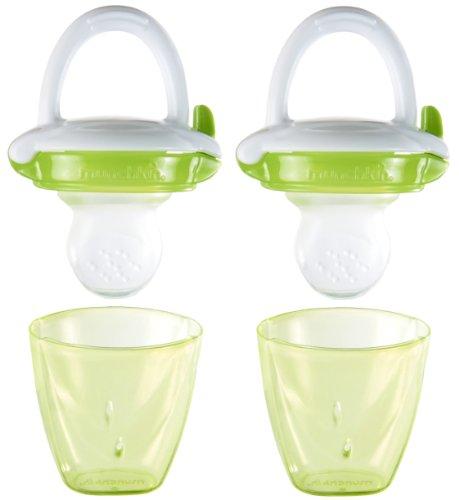 This is also true when it comes to baby food pouches. The front may say spinach and kale, but when you turn it over you’ll find less expensive fillers such as fruit purees, or even fruit juices like apple juice concentrate. Sometimes in a “spinach” pouch the first 3 ingredients are fruits! That’s because, while there may be spinach, the manufacturer is not required to list the percentage of ingredients on the label.
This is also true when it comes to baby food pouches. The front may say spinach and kale, but when you turn it over you’ll find less expensive fillers such as fruit purees, or even fruit juices like apple juice concentrate. Sometimes in a “spinach” pouch the first 3 ingredients are fruits! That’s because, while there may be spinach, the manufacturer is not required to list the percentage of ingredients on the label.
This basically means that your baby is only getting a sweet taste when eating that pouch and isn’t getting exposed to the actual taste of a vegetable. And in those early months of developing tastebuds, getting exposure to all kinds of flavors and tastes is essential to having a baby who doesn’t become a picky eater (who rejects veggies) later on!
Why Is It So Confusing To Find The Best Baby Food Pouches For Your Child?
Ingredient labels are confusing, packaging is misleading. I remember when I first gave Layla a baby food pouch and she devoured it. It was a pouch that said “organic super greens” on it. And I remember thinking: “Yeah! She loves greens!” When I turned it over, the ingredients were: bananas, pear, apple, spinach. What??
It was a pouch that said “organic super greens” on it. And I remember thinking: “Yeah! She loves greens!” When I turned it over, the ingredients were: bananas, pear, apple, spinach. What??
It has always really bothered me that most baby food pouches (even the ones promoting veggies) contain fruit. Like why add bananas or pears to a carrot & sweet potato pouch? Carrots and sweet potatoes are already naturally sweet – there is no need for fruit purees to make it even sweeter! Since breast milk is naturally sweet, it’s so important that babies learn the other tastes: bitter, sour, pungent, etc. when they start solids. All the fruit purees are essentially taking over your baby’s taste buds, making them think that if food isn’t sweet it’s not worth eating.
On top of that, many pouches that are fruit-forward and look healthy actually have a ton of unnecessary processed ingredients added. Take a look at Gerber’s Fruit & Yogurt Strawberry Banana Pouch.
Sugar, Carrot Juice Concentrate, Natural Flavor, Gelatin, Two different types of coloring…
These are all major red-flag ingredients in baby food. What in the world is gelatin doing in a pouch that looks vegetarian-friendly? And for a pouch that is supposed to have apples and strawberries (both of which are rich in fiber), there is less than 1g fiber in the entire pouch because of all of the fillers added. AND this pouch has 14g sugar. That’s as much as 1.5 Fun Sized Milky Way bars, or 1/3 of a can of Coke.
What in the world is gelatin doing in a pouch that looks vegetarian-friendly? And for a pouch that is supposed to have apples and strawberries (both of which are rich in fiber), there is less than 1g fiber in the entire pouch because of all of the fillers added. AND this pouch has 14g sugar. That’s as much as 1.5 Fun Sized Milky Way bars, or 1/3 of a can of Coke.
That’s why reading labels is so important to finding healthy, packaged baby food! So how do you find those pouches? Skip to the end of this post for my list of the healthiest baby food pouches! But first…
Top 5 Tips To Find The Best Baby Food Pouches
- Look at the sugar content: Stick to pouches with less than 8g of sugar, but ideally you’ll want to find pouches between 4-6g of sugar. For example, if you look at the front of Ella’s Organic Apples, Green Beans, Raisins pouch, you might think, “green beans are in here, this is great!” But the pouch actually has 13g of sugar from the apples and raisins, while the green beans are a very small addition.
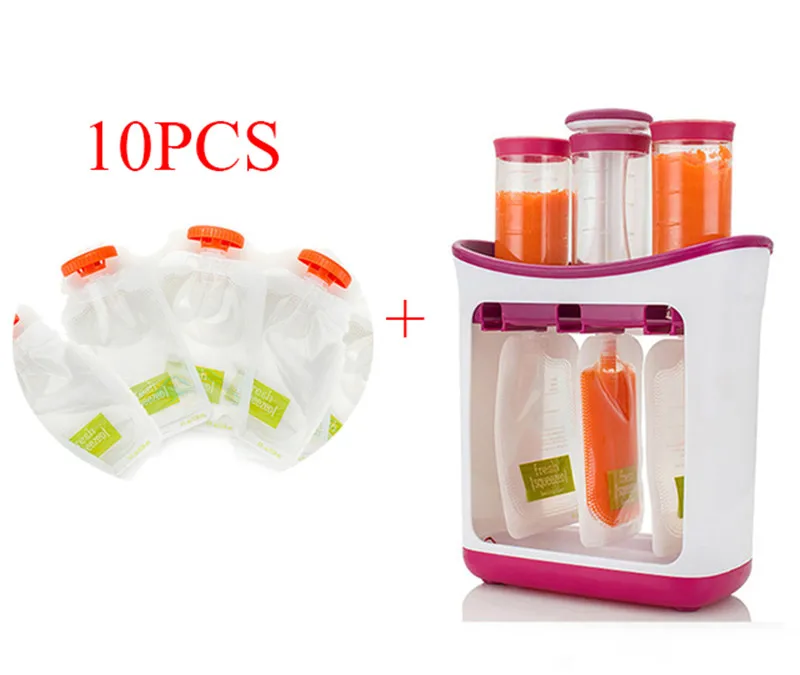 13g sugar is equal to a fun sized milky way bar.
13g sugar is equal to a fun sized milky way bar. - Look to see if the ingredient listed on the front of the package is the first ingredient listed on the back. If you’re buying “spinach and apples,” it’s likely that apples are the dominant flavor. Some companies are more transparent than others on the percentage or amount of each ingredient in the pouch.
- Stick to pouches that ONLY have vegetables. These are harder to find, but they do exist. And they actually taste like vegetables! If you do buy one with veggies & fruits, make sure there is <8g sugar, that vegetables are first, and fruits are last on the ingredients list. Beware of labels that make it seem like the pouch only has veggies: there are some deceptive pouches such as Veggie Blends, and Plum Organics Mighty Veggie pouches. These veggie blends also contain fruit, and often has as much or sometimes more sugar than those labeled as fruit blends.
- Fiber matters.
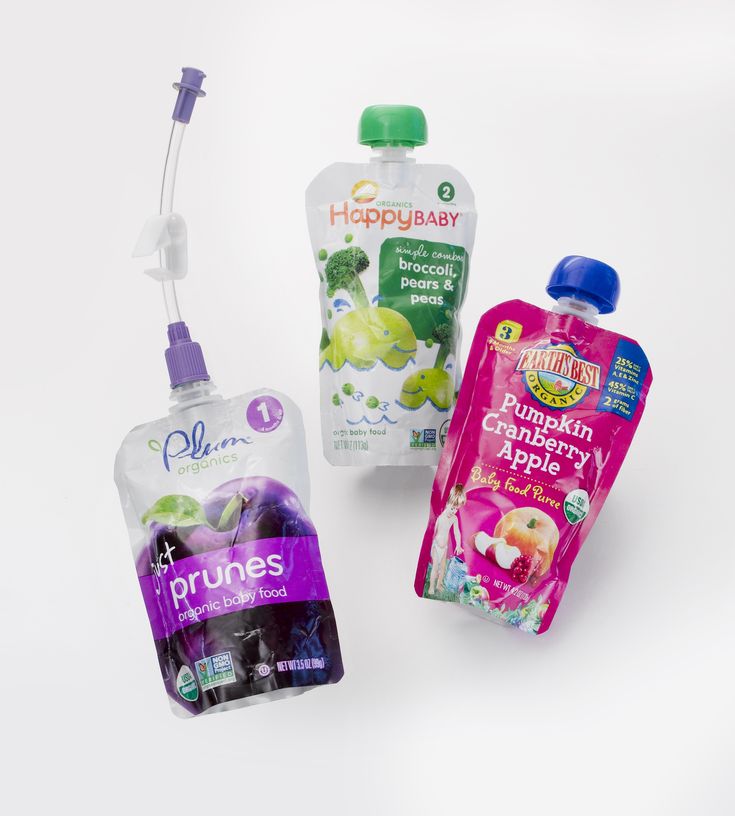 A good sign that a pouch is either mostly water or fillers is when the fiber content is 1g or less. Aim for pouches with 2g fiber or more.
A good sign that a pouch is either mostly water or fillers is when the fiber content is 1g or less. Aim for pouches with 2g fiber or more. - Avoid ingredients likely to be contaminated with heavy metals. Pouches that have apples, pears, carrots, sweet potatoes, and rice are particularly at risk. (For more details: A study done by the Clean Label Project in 2017 found that 65% of baby food products had detectable levels of arsenic, 36% detectable levels of lead, and 58% contained detectable levels of cadmium. A more recent study done by Consumer Reports in August of 2018 found that out of 50 nationally distributed baby food products, every single one of them had trace amounts of at least one of the heave metals which included arsenic, lead, or cadmium. Two-thirds of those tested had worrisome amounts of heavy metals, and 15 of the foods could pose potential health risk. The pouches that included rice and/or sweet potato were more likely to have higher amounts of heavy metal, and organic foods were just as likely to contain heavy metals as their non-organic counterparts.
 )
)
There are pouches out there that are organic, vegetable-forward, and don’t have any added sugars or fruit juices in them.
So here it is: the healthiest baby food pouches on the market today, the brands I love, and which pouches to buy.
A special shout out to Alison Corey from Keeping the Peas who helped me with some of the research for this post! If a pouch is not listed on this list, it’s likely either high in heavy metals (per the Consumer Reports and Clean Label Project studies) or too high in sugar/fruits/processed ingredients, and should be avoided. But if you have a question about a particular pouch, don’t hesitate to ask in the comments of this post!
What Makes These the Best Baby Food Pouches?
- They contain between 0-8g of natural sugar; and 0g added sugar
- They have 2g fiber or more
- They are all organic
- They don’t carry a risk of heavy metals
The Best Baby Food Pouches (Organized by Brand)
Holle Organic Baby Food: Holle’s baby food is made in Europe and is certified both Organic and Biodynamic, which means that their farming practices go above and beyond just regular organic standards.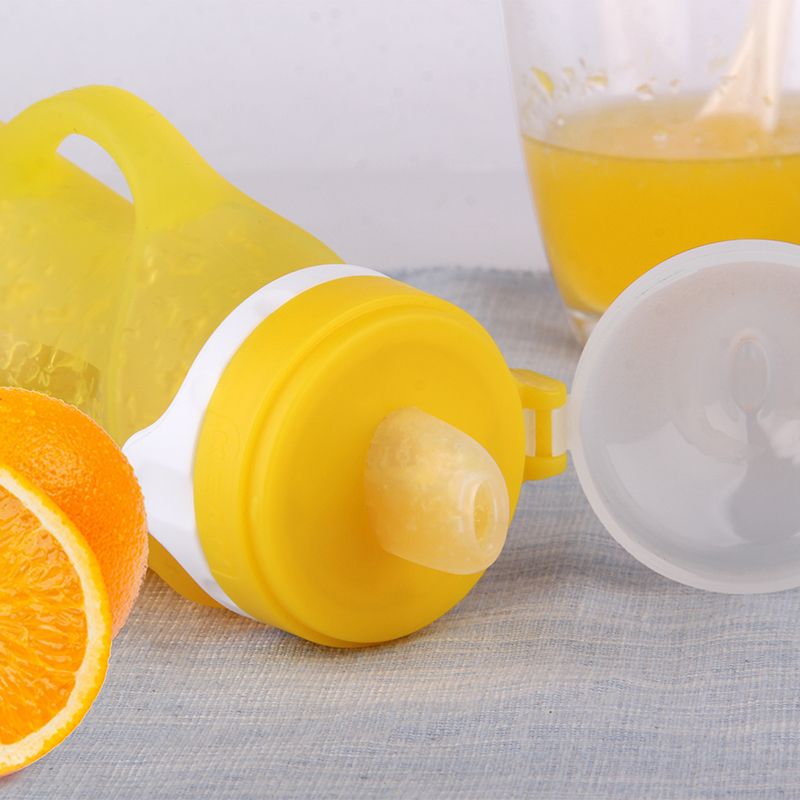 All of their baby food is unsweetened, I love these flavors from this brand:
All of their baby food is unsweetened, I love these flavors from this brand:
- Veggie Bunny: Carrots, Sweet Potatoes, and Peas
- Power Parrot: Pear, Apple, Spinach
- Zebra Beat: Apple, Banana, Beetroot
Cerebelly Organic Custom Pouches: All of Cerebelly’s pouches are super healthy and made with 100% organic ingredients. All of their pouches were developed by their founder – a neuroscientist and mom who is dedicated to creating the highest quality baby food possible. The way it works is super simple: you fill out a quick survey that tells Cerebelly your child’s age and what they’re up to. Cerebelly recommends a personalized pack of organic purees with the right blend of nutrients, and it gets shipped right to your door! The best part – they offer 20% off your first order + free shipping with the code: FIRSTORDER20!
Yumi Organic Baby and Toddler Food.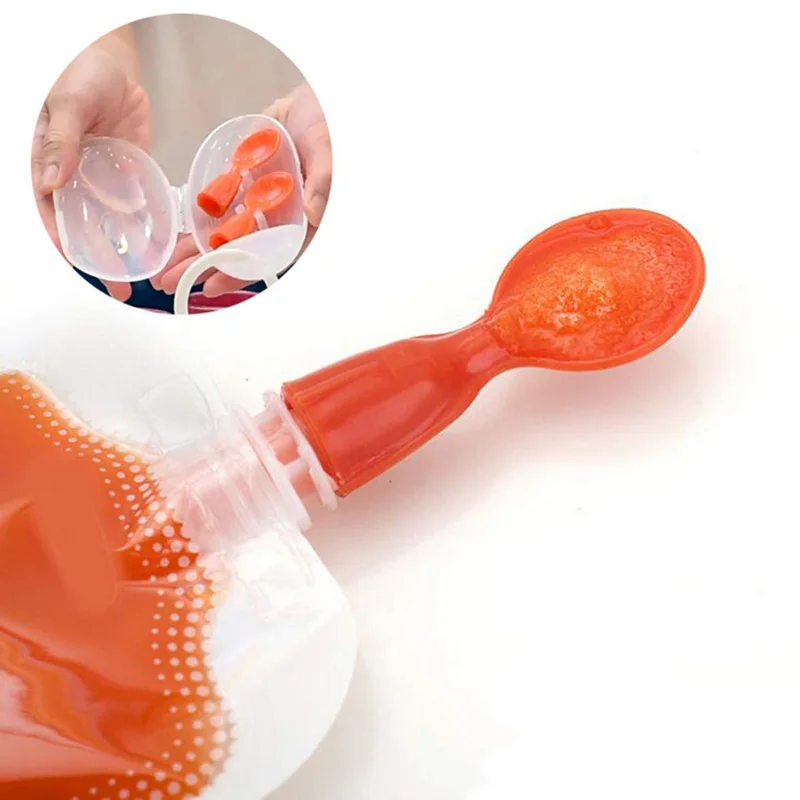 Yumi prides itself on creating custom blends for your baby that are 100% organic, made with real food, customized based on your baby’s stage of eating (from Stage 1 purees all the way to snacks and mini meals!). Their food comes in little jars – not pouches – as it’s made fresh and delivered weekly, straight to your door. You can also be confident that Yumi’s food contains no heavy metals, as they partner with trusted farms that are USDA Certified Organic, Non-GMO Project Verified and follow rigorous food safety testing. They look at federal data on soil contamination to find the best farms. Lastly, you get to choose from their range of 60+ unique organic meals you won’t find anywhere else, handpicked by nutritionists to support every milestone! Yumi is also offering 50% off your first order with the code: PICKY50!
Yumi prides itself on creating custom blends for your baby that are 100% organic, made with real food, customized based on your baby’s stage of eating (from Stage 1 purees all the way to snacks and mini meals!). Their food comes in little jars – not pouches – as it’s made fresh and delivered weekly, straight to your door. You can also be confident that Yumi’s food contains no heavy metals, as they partner with trusted farms that are USDA Certified Organic, Non-GMO Project Verified and follow rigorous food safety testing. They look at federal data on soil contamination to find the best farms. Lastly, you get to choose from their range of 60+ unique organic meals you won’t find anywhere else, handpicked by nutritionists to support every milestone! Yumi is also offering 50% off your first order with the code: PICKY50!
Serenity Kids
I love Serenity Kids because ALL of their pouches are under 5 grams of sugar! They’re 100% organic, made with super clean ingredients, has no added preservatives or sugars, and were created by a husband and wife team trying to find a better option for baby food for their daughter. Here are all of hte pouches I love – use the code PICKY to get 15% off your first order!
Here are all of hte pouches I love – use the code PICKY to get 15% off your first order!
- SK – Kabocha Squash, Butternut, Pumpkin, 2g Sugar
- SK – Butternut Squash + Spinach, 2g Sugar
- SK – Carrot, Spinach and Basil, 3g Sugar
- SK – Chicken, Beef, Pork or Wild Salmon (choose your variety here), 2-3g Sugar
- SK – Carrots, 4g Sugar
- SK – Sweet Potato + Parsnip, 4g Sugar
- SK – Mixed Root Veggies, 4g Sugar
- SK – Sweet Potato + Spinach, 4g Sugar
White Leaf Provisions: WLP is a family business run by a husband and wife team who are bringing the first 100% regeneratively farmed, biodynamic, organic & GMO-Free baby food line to retail in the US! I love their pouches because the ingredients are so pure, and the majority of them have less than 8 grams of sugar per pouch! And, they are offering all of my readers 10% off your purchase by using the code “PICKYEATS” at checkout! My two favorites are:
- WLP – Pumpkin + Nectarine, 5g Sugar
- WLP – Peach + Oat, 7g Sugar
- WLP – Pumpkin + Nectarine, 5g Sugar
- WLP – Peach + Oat, 7g Sugar
Amara Organic – Note: these do not come in a pouch that is ready to serve – they need to be mixed with water or milk and served in a bowl. But these are still a good option if your baby is ok eating from a bowl/spoon and you need an option that saves you time!
But these are still a good option if your baby is ok eating from a bowl/spoon and you need an option that saves you time!
- Amara – Black Bean and Sweet Corn, 0g Sugar
- Amara – Peas, Corn, Carrots, 2g Sugar
- Amara – Potato Kale Mash, 2g Sugar
- Amara – Pumpkin + Pear, 2g Sugar
- Amara – Sweet Potato Raspberry, 5g Sugar
- Amara – Oats and Berries, 5g Sugar
Ella’s Kitchen Organic
- Ella’s Kitchen Veggie Bean Feast, 1g Sugar
- Ella’s Spaghetti and Meatball, 1g Sugar
- Ella’s Beefy Stew, 2g Sugar
- Ella’s Vegetable and Lentil Bake, 3g Sugar
- Ella’s Pears, Peas, and Broccoli, 8g Sugar
Beechnut Organics
- Beechnut Peas & Spinach, 2g Sugar
- Beechnut Peas, Green Bean and Avocado, 4g
- Beechnut Corn, Kale, Quinoa, 4g Sugar
- Beechnut Veggies, Squash, Peas, Pear, 6g Sugar
- Beechnut Apple, Kiwi, Spinach, 6g Sugar
- Beechnut Pear, Pumpkin, Cranberry, 7g Sugar
- Beechnut Veggies, Carrots, Zucchini, Pear, 7g Sugar
- Beechnut Apple, Black Bean, Raspberry, 8g Sugar
Sprout Organic
- Sprout – Green bean, peas, butternut squash, 1g Sugar
- Sprout – Butternut squash, chickpea, quinoa, dates, 4g Sugar
- Sprout – Butternut Squash, Blueberry, Apple, with Beans, 5g Sugar
- Sprout – Mixed Berry Oatmeal, 7g Sugar
Plum Organics
- Plum – Hearty Veggie, Pumpkin, Spinach, Chickpea and Broccoli, 1g Sugar
- Plum – Hearty Veggie, Corn, Kale, Carrot and Tomato, 1g Sugar
- Plum – Hearty Veggie, Butternut Squash, Carrot, Chickpea and Corn, 1g Sugar
- Plum – Hearty Veggie, Carrots, Beans, Spinach and Tomato, 2g Sugar
- Plum – Stage 3 Meals, Carrot, Spinach, Turkey, Corn, Apple, Potato, Celery, Onion, 2g Sugar
- Plum – Stage 3 Meals, Carrot, Chickpea, Pea, Beef, Tomato, Celery, Date, Onion, 4g Sugar
- Plum – Eat Your Colors Red, 5g Sugar
- Plum – Eat Your Colors Orange, 5g Sugar
- Plum – Pear, Green Bean and Greek Yogurt, 6g Sugar
- Plum – Pear Spinach and Pea, 6g Sugar
- Plum – Pear, Purple Carrot and Blueberry, 7g Sugar
- Plum – Eat Your Colors Green, 7g Sugar
- Plum – Mighty 4 – Guava, Banana, Black Bean, Carrot, Oat, 7g Sugar
- Plum – Mighty 4 – Pear, Cherry, Blackberry, Strawberry, Spinach, 7g Sugar
Happy Family Organics
- HF – Hearty Meals, Root Vegetables, Turkey and Quinoa, 2g Sugar
- HF – Hearty Meals, Harvest Vegetables, Chicken and Quinoa, 2g Sugar
- HF – Hearty Meals, Vegetable Beef Medley, 3g Sugar
- HF – Green Beans, Spinach, and Pears, 4g Sugar
- HF – Zucchini, Pear, Chickpea, Kale 5g Sugar
- HF – Purple Carrots, Banana, Avocado, and Quinoa, 6g Sugar
- HF – Zucchini, Apples, Peas, Quinoa, and Basil, 6g Sugar
- HF – Pear, Green Beans, Peas + Super Chia, 6g Sugar
- HF – Pears, Kale, and Spinach, 7g Sugar
- HF – Black Beans, Beets and Bananas, 7g Sugar
- HF – Pears, Pumpkin, Peaches, and Granola, 7g Sugar
- HF – Pears, Peas, Broccoli, 7g Sugar in the new formulation
- HF – Pumpkin, Apples, Peached and Cinnamon, 8g
- HF – Pears, Squash, and Blackberries, 8g Sugar
- HF – Pears, Zucchini, Peas, 8g Sugar
- HF – Pears, Pumpkin, Passionfruit, 8g Sugar
Earth’s Best
- EB – Broccoli, Red Lentil, Oat, 1g Sugar
- EB – Spinach & Potato, 1g Sugar
- EB – Carrots & Broccoli, 2g Sugar
- EB – Winter Squash, 2g Sugar
- EB – Summer Vegetable Dinner, 2g Sugar
- EB – Corn & Butternut Squash, 3g Sugar
- EB – Peas & Brown Rice, 4g Sugar
- EB – Zucchini & Broccoli Medley, 4g Sugar
- EB – Spring Vegetables & Pasta, 4g Sugar
Note: If you are in Canada, Baby Gourmet has a couple of good options (e. g. their roasted squash and fruit medley has only 6 grams of sugar!), and their savory meals are low in sugar as well!
g. their roasted squash and fruit medley has only 6 grams of sugar!), and their savory meals are low in sugar as well!
I used many of the pouches on this list (prioritizing the flavors listed in bold since those contain only veggies) for my kids when I needed a meal on the go. One thing to note on these pouches is that even if you use them regularly, it’s still important to incorporate a variety of finger foods so your baby becomes familiar with the different textures and flavors of non-pureed food.
I know the baby food aisle can be overwhelming at times, but I hope this post helps you find the healthiest baby food pouches with confidence! If you have any questions, don’t hesitate to leave me a comment on this post or contact me here! I respond to every single message I get! 🙂
Looking for the best baby products? Learn more about my favorite kids daily multivitamin that is included in my article on best multivitamin for kids. Or check out these fantastic products for your kids:
- The Best Probiotics for Kids
- Best Baby Cereal Brands
- 80+ Healthy Road Trip Snacks For Kids And Toddlers
- Best Organic Baby Formula
Disposable bag for feeding babies
opening at one end, sealed with a rigid means adapted to be connected to a protective cover or nipple, and can be used for infant feeding.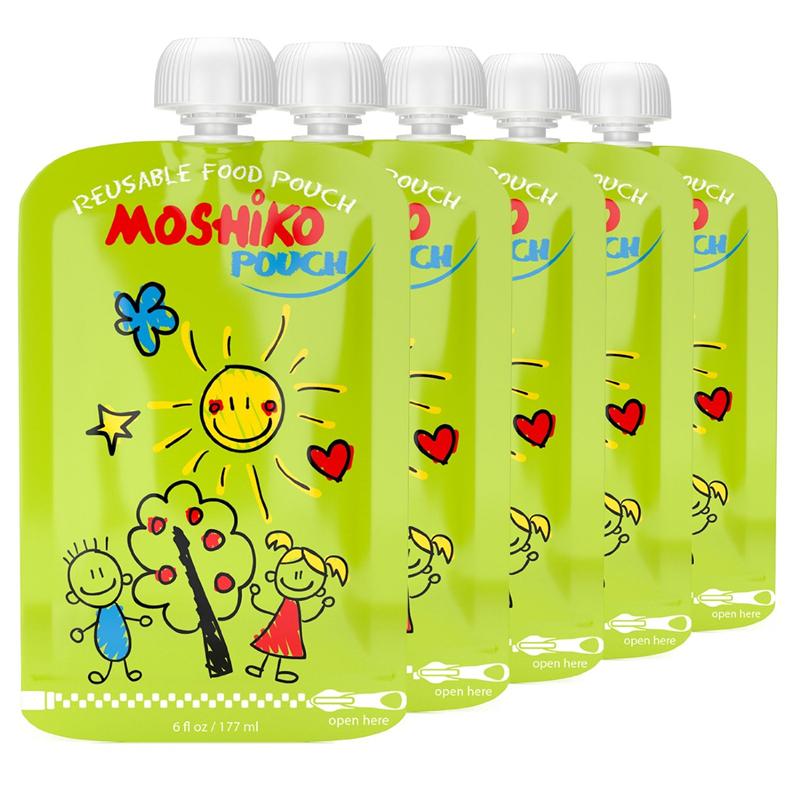 According to the utility model, a container made of a flexible soft material has a means for indicating the temperature of the contents. Achievable technical result - increased ease of use when feeding babies. nine0003
According to the utility model, a container made of a flexible soft material has a means for indicating the temperature of the contents. Achievable technical result - increased ease of use when feeding babies. nine0003
Field of technology to which the utility model belongs.
The utility model relates to horns (bottles) for feeding, and more specifically to disposable bags for feeding baby food, including a container made of flexible soft material, forming a chamber for accommodating baby food, and having an opening at one end, hermetically connected to a rigid product adapted to be connected to a protective cap or nipple and can be used for infant feeding. nine0003
State of the art.
There are many bottles for feeding babies. Among them are solutions in which a disposable container made of flexible soft material is used as a bottle. This is very important to ensure sterility, which is especially necessary for an infant in the first months of his life.
Thus, a disposable bag for feeding infants is known from the prior art, which includes a container of flexible soft material, forming a chamber for receiving baby food, and having an opening at one end, hermetically connected with a rigid means adapted for connection with a protective cover or with a nipple , see the description of the application for invention 2005135458, published on March 10, 2006
This device is the closest in technical essence to the claimed utility model and is taken as a prototype for the proposed utility model.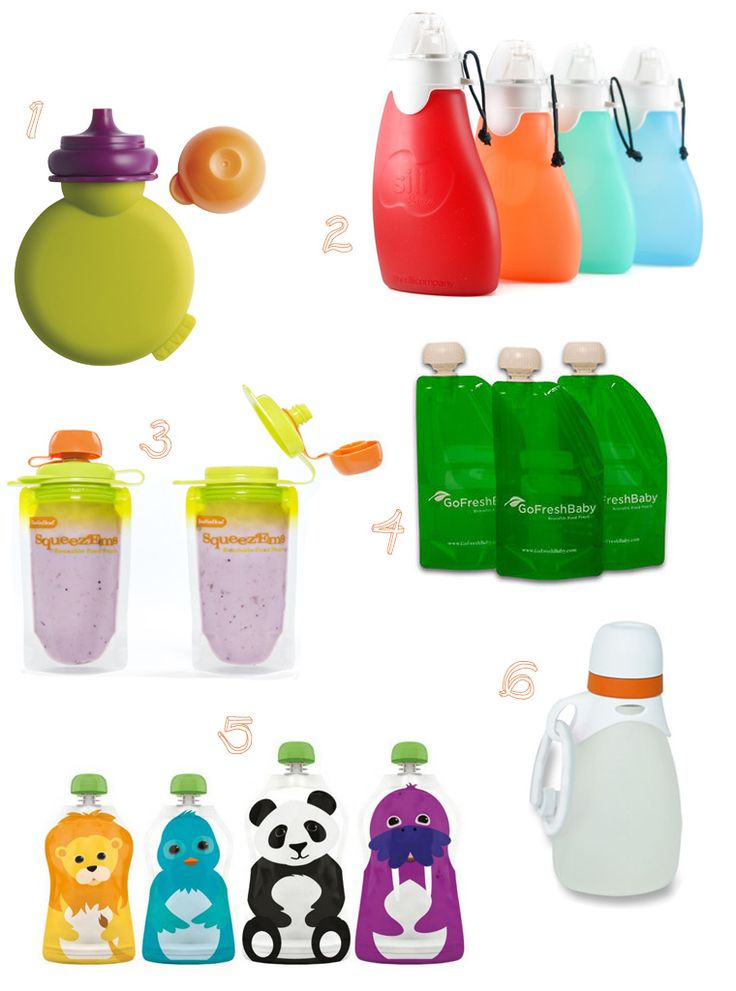
The disadvantage of this device is the low ease of use when feeding babies, which is due to the fact that when feeding you need to monitor the temperature of baby food - the contents of such a device, and it is difficult to measure the temperature of baby food when it is inside such a device. It is necessary, for example, to break the tightness and lower the thermometer inside, wait for the result. At the same time, baby food could be at normal temperature and ready to feed the baby, and as a result of such manipulations, it can cool down and need to be warmed up. nine0003
Disclosure of utility model.
Based on this original observation, the present utility model mainly aims to provide a disposable bag for feeding babies, which makes it possible to mitigate at least one of the above drawbacks
due to the possibility of indicating the temperature of the mixture and the possibility of indicating when it is necessary to heat or cool baby food. nine0003
To achieve this, the container made of flexible soft material has a means of indicating the temperature of the contents.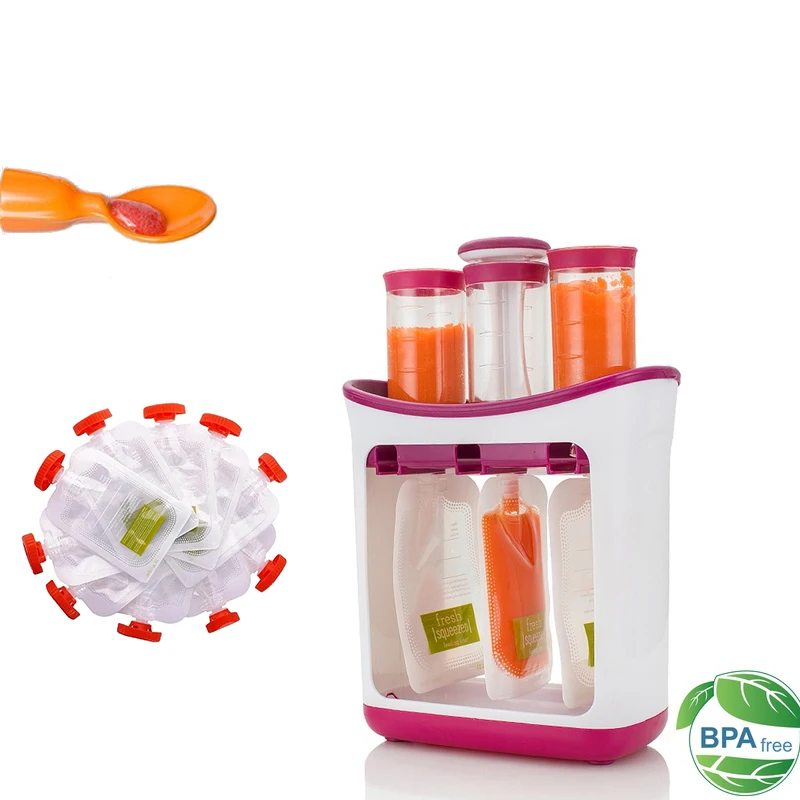
This advantageous characteristic makes it possible to indicate to the user who is feeding the infant the temperature of the contents of the disposable pouch. At the same time, it becomes clear whether it is possible to immediately feed the baby, or whether it is necessary to heat / cool the baby food.
There is a variant of the utility model, in which the means for indicating the temperature of the content is located on the outer surface of the container made of flexible soft material. nine0003
This advantageous characteristic makes it possible to easily produce such disposable pouches by placing on the surface of the container any variant of the temperature indication means.
There is a variant of the utility model, in which the means for indicating the temperature of the content is made in the form of a film thermal indicator.
This advantageous characteristic makes it possible to use a standard film temperature indicator.
There is a variant of the utility model, in which the film thermal indicator is made in the form of three parallel strips equidistant from each other and located along the container of a flexible soft material along the entire length of the container.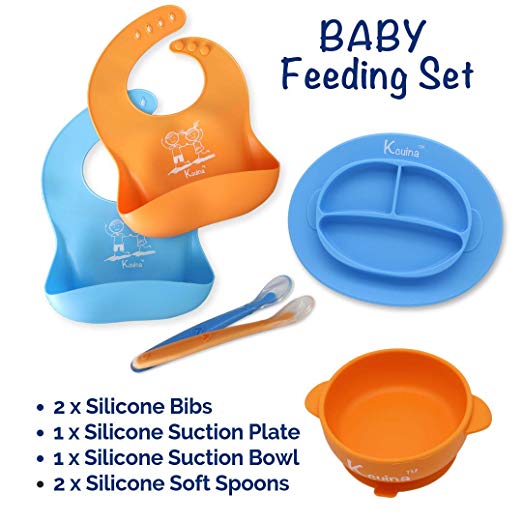 nine0003
nine0003
Thanks to this advantageous characteristic, it is possible to control the temperature of baby food at a glance from any side of the container and in any part of the container, which is especially important because the container is made of a flexible soft material and can take a variety of shapes, and baby food can be in isolated places of the container.
There is a variant of the utility model, in which the thermal indicator additionally includes two layers of hermetically laminated film between which film markers are placed, which react to changes in the temperature of the contents by changing color. nine0003
Thanks to this advantageous characteristic, it is possible to easily manufacture such film thermal indicators on the basis of already existing technology using film markers that react to changes in the temperature of the contents with a color change.
There is a variant of the utility model, in which the film thermal indicator additionally consists of a layer of a substance that changes its color under the influence of temperature.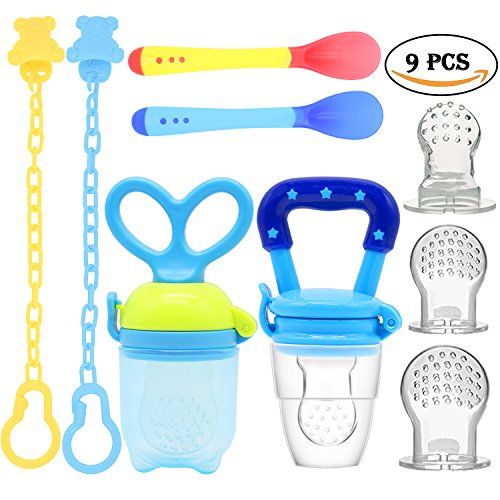
Thanks to this advantageous characteristic, it becomes possible to produce an alternative utility model, using, for example, thermochromic paints that change their color under the influence of temperature with the possibility of restoring the original color, i.e. using reversible fading of temperature sensitive inks. nine0003
There is a variant of the utility model, in which the temperature indicating means is made in the form of a fiber uniformly located in the walls of the container and which reacts to changes in the temperature of the contents by changing color.
Thanks to this advantageous characteristic, it becomes possible to manufacture the container itself with the participation of a substance that reacts to changes in the temperature of the contents by changing color.
There is a variant of the utility model in which the temperature indicating means is made in the form of a component that reacts to a change in the temperature of the contents by changing the color added to the material from which the container is made of a flexible soft material.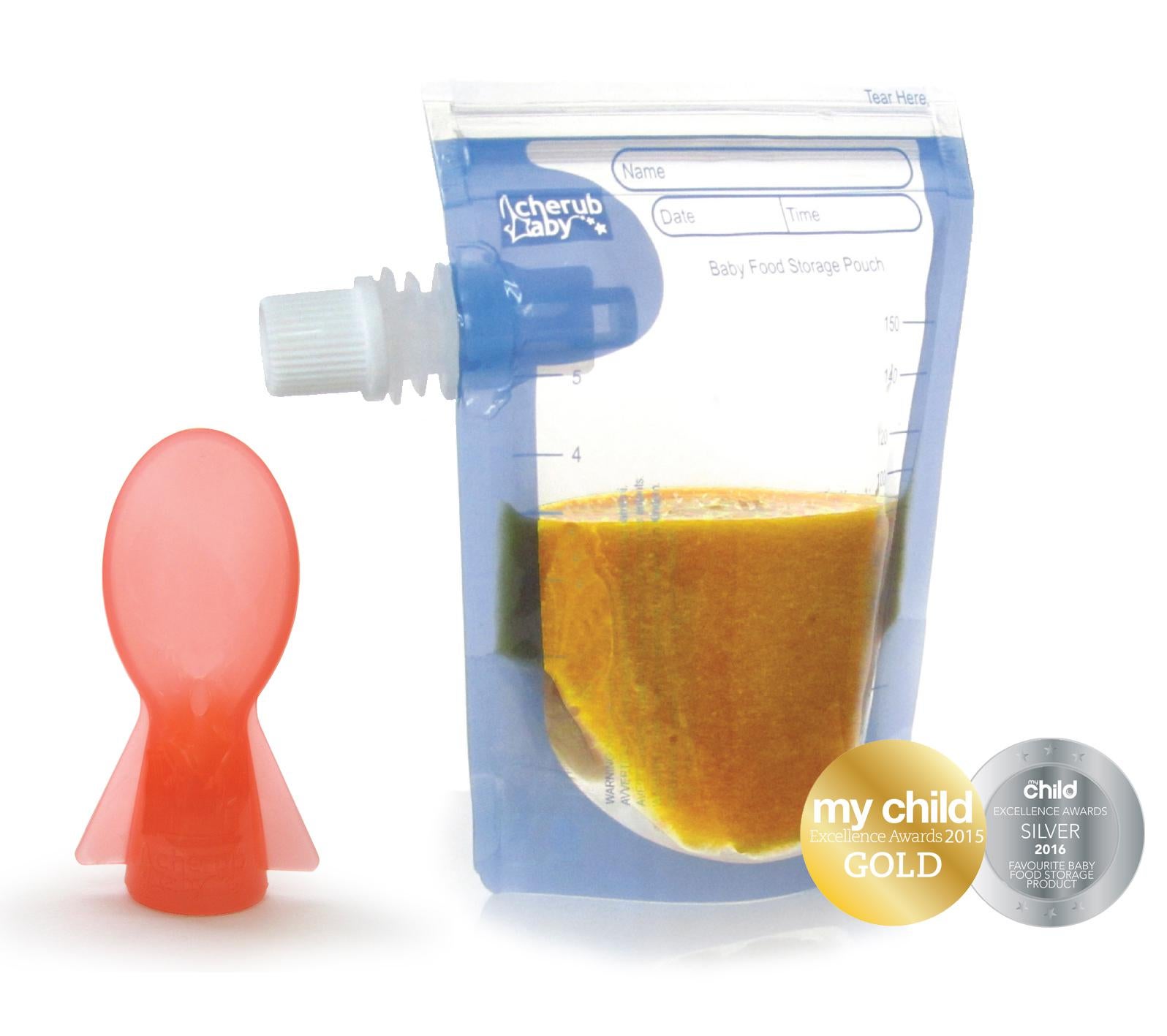 nine0003
nine0003
Thanks to this advantageous characteristic, it becomes possible to produce an alternative version of the manufacture of the container itself with the participation of a substance that reacts to changes in the temperature of the contents by changing color.
There is a variant of the utility model, in which the means for indicating the temperature of the contents is made in the form of three parallel strips of film thermometers equidistant from each other and located along the container made of flexible soft material along the entire length of the container.
This advantageous characteristic makes it possible to control the temperature very precisely. The sensitivity of a film thermometer is much higher than many other thermal indicators. They can measure temperature changes as small as 0.1°C. It becomes possible to measure short-term temperature with a response time of only a few microseconds.
There is a variant of the utility model, in which the means for indicating the temperature of the contents is made in the form of three parallel strips equidistant from each other and located along the container of a flexible soft material along the entire length of the container can be adapted to change its color under the influence of temperature, while having the ability to be in at least three possible color states, one of which corresponds to a reduced temperature of baby food for feeding the baby, the second of which corresponds to the normal temperature of baby food for feeding the baby, the third of which corresponds to an increased temperature of baby food for feeding the baby.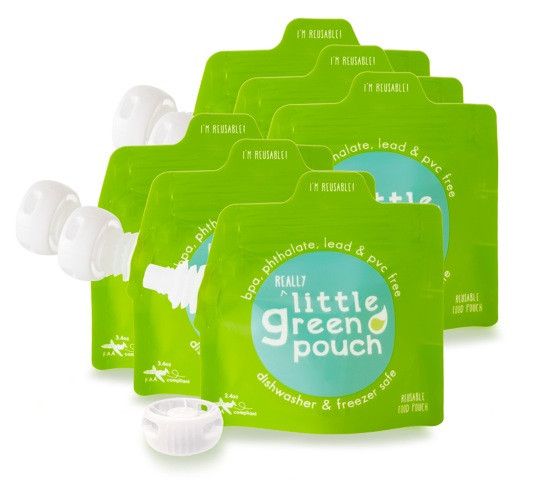 nine0003
nine0003
Due to this advantageous characteristic, it is possible to quickly convey the necessary information to users of the utility model regarding the readiness to feed the baby. It suffices to see that the temperature display means signals, for example, green. The other two color options give you an instant sense of when to heat or cool baby food.
The set of essential features of the proposed utility model is unknown from the prior art for devices of a similar purpose, which allows us to conclude that the utility model meets the "novelty" criterion. nine0003
Brief description of drawings.
Other features and advantages of the utility model are clear from the description below for illustration and without being restrictive, with reference to the accompanying drawings, in which: cover, side view, according to the utility model.
- figure 2 schematically depicts a top view of a disposable bag for feeding babies in the embodiment of a temperature indicator in the form of three parallel strips equidistant from each other, according to the utility model.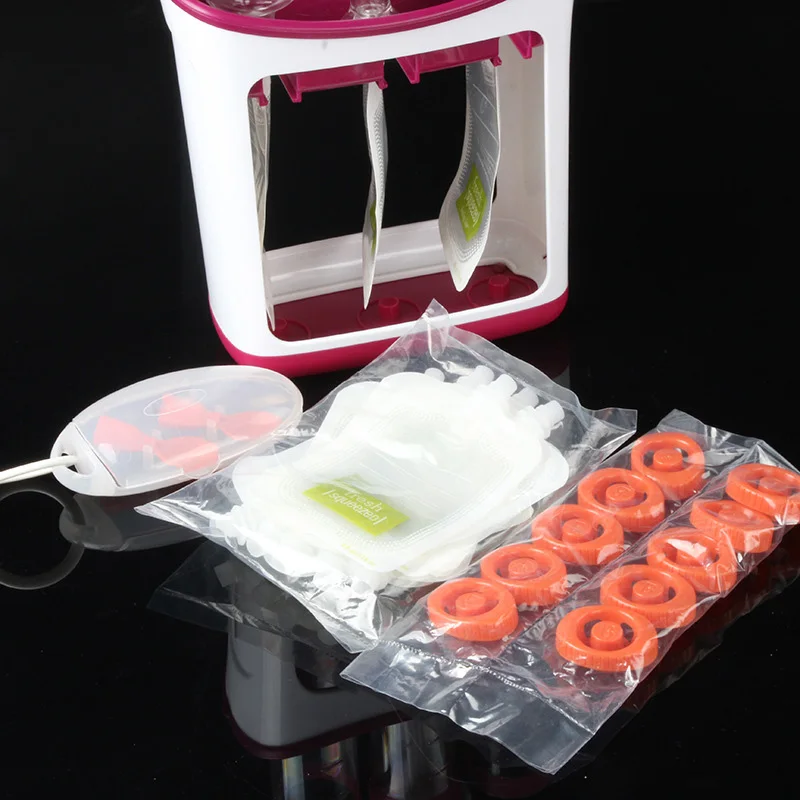 nine0003
nine0003
- figure 3 schematically depicts a functional diagram of a disposable baby feeding bag complete with a nipple and a protective cap, side view, according to the utility model.
- figure 4 depicts the steps of using a disposable bag for feeding babies, according to the utility model.
According to Figures 1 and 3, the disposable infant feeding bag includes a receptacle 1 made of flexible soft material, forming a chamber for receiving baby food, and having an opening 2 at one end, hermetically connected to a rigid means 3 adapted to be connected to a protective cover 4 or with a cover with a hole 8 for attaching a teat 5 to a teat 5.
A utility model with a protective cover 4 is shown in figure 1, and a utility model with a teat 5 is shown in figure 3. temperature indication, figure 2 shows the option when there are 3 such means and they are equidistant from each other. In general, there may be more than three.
Both the teat 5 and the protective cover 4 cannot be attached to the rigid bag 3 at the same time. The protective cap 4 is needed to seal the bag before its first use, and the subsequent use of this cap is not expected according to the logic of the model. The protective cover 4 for sealing does not have and does not imply any means for attaching the teat to it. nine0003
The protective cap 4 is needed to seal the bag before its first use, and the subsequent use of this cap is not expected according to the logic of the model. The protective cover 4 for sealing does not have and does not imply any means for attaching the teat to it. nine0003
The outer surface of the protective cover 4 is not sterile. Therefore, the contact of the nipple with it is unhygienic. The protective cover 4 does not have devices for attaching a nipple 5 or a protective cap 7 to it. The temperature indication means 6 can be made in the form of a film thermal indicator. nine0003
The film thermal indicator can be made in the form of three parallel strips equidistant from each other and located along the entire length of the container 1 from a flexible soft material. See figure 2.
Film thermal indicator in the form of three parallel strips equidistant from each other and located along the entire length of the container 1 made of flexible soft material, can be made three-layer, and include two layers of hermetically laminated film between which film markers are placed, which react to changes in the temperature of the contents by changing color. nine0003
nine0003
Means for indicating the temperature of the content 6 can be made in the form of a layer of a substance applied by three parallel strips equidistant from each other and located along the entire length of the container 1 from a flexible soft material that changes its color under the influence of temperature.
Means for indicating the temperature of the content 6 can be made in the form of a fiber uniformly located in the walls of the container along the entire length of the container 1 and which reacts to changes in the temperature of the contents by changing color. nine0003
The content temperature indicating means 6 may be in the form of a component that reacts to a change in the temperature of the content by changing the color added to the material from which the flexible soft material container is made.
Means for indicating the temperature of the content 6 can be made in the form of three parallel strips of film thermometers equidistant from each other and located along the container made of flexible soft material along the entire length of the container 1.
Temperature display means 6 of the content can be adapted to change its color under the influence of temperature, while being able to be in at least three possible color states, one of which corresponds to a reduced temperature of baby food for feeding the baby, the second of which corresponds to normal temperature baby food for the purpose of feeding the baby, the third of which corresponds to the elevated temperature of the baby food for the purpose of feeding the baby. nine0003
Additionally, figure 3 indicates elements that are not included in the object of the utility model, but can be used together with it. These are the protective cap 4 of the container, the nipple 5, the protective cap for the nipple 7. The protective cap for the nipple 7 has an annular protrusion under the dome of the protective cap at the point of contact with the nipple.
The nipple 5 can be attached to the rigid means 3 of the disposable bag using a special cover 8 with a hole for attaching the nipple 5, made as a separate fastener. nine0003
nine0003
Disposable Baby Feeding Pouch can have a capacity 1 of different sizes, eg 50, 150, 200 ml, which can be made of a transparent material that does not allow water to pass through, such as food grade polyethylene.
The mouth of the container 1, formed by the hole 2, is hermetically connected to a rigid means 3, which is a short moisture-resistant transparent pipe made of food material, by which you can hold a disposable bag when preparing baby food, for example, milk formula and when feeding. On the outer surface of the rigid means 3, on the side of the opposite container 1, there may be a thread for attaching either a protective cover 4 of the container 1, or a cover 8 with a hole for attaching a nipple 5. 5. On the outer side of the cover 8 there is a groove along the entire length of its circumference, and on the inner side of the edge of the protective cap 7 there is an annular protrusion along the entire length of its circumference. An annular protrusion on the inner side of the edge of the protective cap 7 fits snugly into the groove on the outer side of the cap 8 and securely fixes the cap 7 on the cap 8.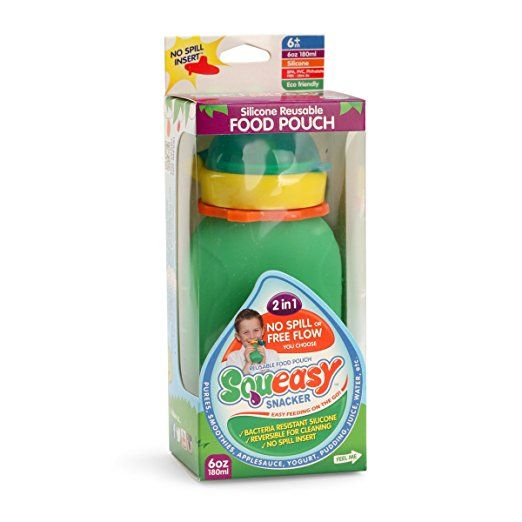 Not shown in the figures. nine0003
Not shown in the figures. nine0003
In order to ensure the sterility of the disposable bag, before the first use, the rigid means 3 can be tightly closed from the outside with a protective cover 4, made, for example, of thin metal. But it can also be an option when a disposable bag initially additionally has a sealed package. In this case, it can be used without a protective cover 4 and after opening the package is filled with baby food, connected to the cover 8 with a hole for attaching the nipple 5 with the nipple 5 installed in the cover 8 and is immediately ready for use. nine0003
The flexible plastic material of the container 1 allows the nipple 5 to be automatically positioned in the baby's mouth in the best possible way without interference, which has a positive effect on the feeding process.
In the case of using a protective cover 4 to improve sealing, the surface of the cover in contact with the hard agent 3 can be covered with a sealant such as food grade rubber. Not shown in figure 1.
Not shown in figure 1.
If a protective cap 4 is used, it can be screwed onto the rigid means 3 in hot air and thus seal the disposable pouch. Before screwing on the protective cap 4, the container 1 of the bag must first be flattened to reduce the effect of the volume of air in it on the air pressure inside the rigid medium 3 after cooling the air in the neck of the rigid medium 3 under the protective cover 4. Since the walls of the container 1 of the bag will close tightly when the air cools, the material of the container of 1 bag should not stick together when closed. nine0003
Rigid means 3 in the case of ensuring the sterility of a disposable bag before the first use of the protective cover 4 is made in the form of a glass with a perforated bottom facing the container 1. Thus, when cooling in the container 1, the air leaves it, but the flexible plastic material of the container 1 it is not retracted into the hard tool 3, which ensures a guaranteed decrease in air pressure inside the hard tool 3, sufficient to retract the cover 4 into the internal volume of the hard tool 3 until it clicks.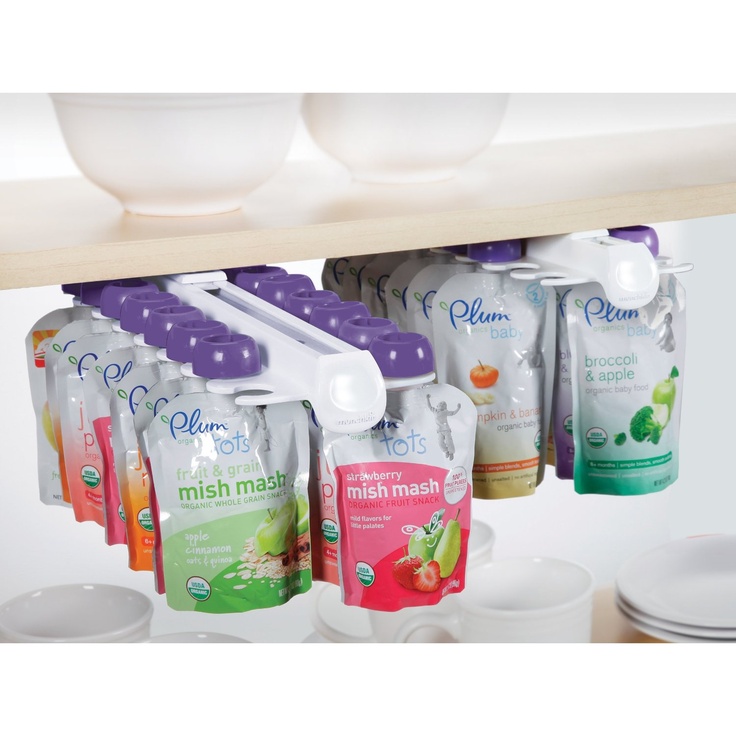 nine0003
nine0003
As the air inside the rigid means 3 cools, the volume of air becomes smaller, which leads to a decrease in pressure inside the rigid means 3 so that the protective cover 4 becomes concave inside the rigid means 3. The protective cover 4 must be designed so that it bends inside the rigid means 3, she made a distinctive click. This property of the protective cover 4 is important for controlling the tightness of the disposable bag. The protective cover 4 can be easily removed with one hand movement by turning it counterclockwise. By equalizing the pressures inside and outside the disposable bag at the moment of removing the protective cover 4, the protective cover 4 restores its shape with a distinct click. This click is a sign that the disposable pouch is ready for use. nine0003
To control the volume of the contents of a disposable bag, a scale can be applied on the outside of it in units of volume, for example in milliliters, with a convenient division value, for example in 10 milliliters. Values on the scale can be located to the left and right of the scale. On one side of the scale in the direction of decreasing values, on the other side of the scale in the direction of increasing values. This arrangement of values allows you to immediately determine both the amount eaten and the amount of left baby food. At the same time, in order to find out the volume of the contents of a disposable bag, you need to take it by the hard tool 3 with the hard tool 3 up. The line along which the walls of the container 1 close together will be on the division of the scale, coinciding with the volume of the contents of the bag. A scale for determining the volume of the contents of the bag can be applied to the outside of the bag on three sides and placed between the strips of the thermal indicator. The scale is not shown in the figures. nine0003
Values on the scale can be located to the left and right of the scale. On one side of the scale in the direction of decreasing values, on the other side of the scale in the direction of increasing values. This arrangement of values allows you to immediately determine both the amount eaten and the amount of left baby food. At the same time, in order to find out the volume of the contents of a disposable bag, you need to take it by the hard tool 3 with the hard tool 3 up. The line along which the walls of the container 1 close together will be on the division of the scale, coinciding with the volume of the contents of the bag. A scale for determining the volume of the contents of the bag can be applied to the outside of the bag on three sides and placed between the strips of the thermal indicator. The scale is not shown in the figures. nine0003
Preferably the container 1 is made of a transparent material, since transparency is important to control the complete dissolution of the dry formula when preparing milk formula directly in the bag.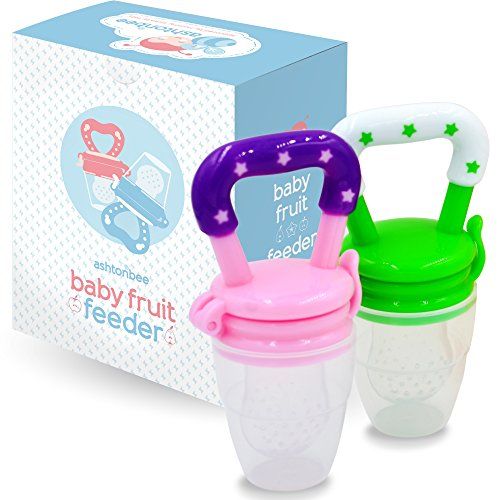
The disposable pouch can have the following configuration options:
First variant: disposable pouch, sterile from the inside, closed with a protective cap 4, cap 8 with a hole for attaching the nipple 5 to the rigid agent 3, nipple 5, transparent protective cap 7 to protect against involuntary leakage of baby food through the nipple 5.
Second variant: only disposable pouch, inside sterile, sealed with protective cap 4.
Third variant: inside and out sterile disposable pouch in sealed packaging.
The container 1 and the rigid means 3 can be made, for example cast, from the same material as a whole. Sufficient stiffness of the rigid means 3 and flexibility and plasticity can be achieved in this case by selecting the thickness and properties of the material.
Realization of utility model. nine0003
The Disposable Baby Feeding Bag works as follows. An embodiment, which does not limit the application of the utility model, is given on the example of the first configuration of a disposable bag.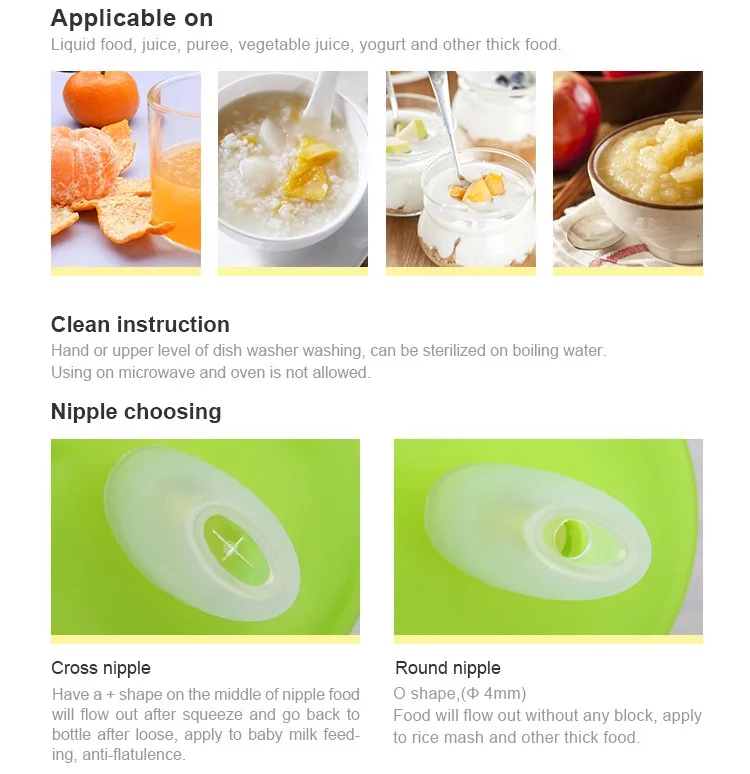
According to Figure 4:
Step A1. A disposable bag for feeding babies is prepared, closed with a protective cover 4, milk formula, warm water to dissolve the mixture, a nipple 5, a lid 8 with a hole for attaching the nipple 5 on a rigid means 3 and a protective cap 7 to protect against involuntary leakage of baby food through the nipple 5 . nine0003
Stage A2. The nipple 5 is inserted into the opening of the lid 8 for fixing the nipple 5 on the rigid means 3 and, holding the lid 8, pull the nipple 5 by the tip so that the nipple 5 is evenly fixed in the lid 8 with the help of a special rim on the nipple 5. Not shown in the figures. The protective cap 7 is tightly put on the cover 8 with the nipple 5 fixed in it.
Step A3. Open a jar of dry milk formula and prepare a measuring spoon.
Stage A4. Take the disposable bag by the hard tool 3 with one hand, and with the other hand remove the protective cover 4 from the hard tool 3. To do this, tightly grasp the protective cover 4 with the other hand and turn it counterclockwise with force. If the protective cover 4 clicked, then the disposable bag was sealed and can be used. If the lid does not click, this disposable bag is thrown away, it cannot be used. nine0003
If the protective cover 4 clicked, then the disposable bag was sealed and can be used. If the lid does not click, this disposable bag is thrown away, it cannot be used. nine0003
Step A5. Fill the disposable bag with formula
Step A6. Pour warm water into a disposable bag to the required volume, controlling the volume on the scale on the disposable bag.
Stage A7. The cap 8 with the nipple 5 fixed in it and the protective cap 7 put on it is tightly screwed onto the rigid means 3.
Step A8. Taking the disposable bag with one hand by the hard tool 3 with the nipple 5 up, dissolve the milk mixture, kneading the disposable bag with the fingers of the other hand. nine0003
Step A9. Holding the disposable bag with one hand by the rigid tool 3 with the nipple 5 up, remove the protective cap 7 from the cover 8 and remove air from the disposable bag by slightly squeezing the disposable bag with the other hand. The air will escape through the freed opening of the nipple 5 and will not cause colic in the baby.
Stage A10. The temperature of the baby food is controlled using a temperature indicator 6. If it is made in the form of a tool adapted to change its color under the influence of temperature, and has the ability to be in at least three possible color states, then when indicating the color that corresponds to the reduced temperature of the baby food , heat up the baby food until the temperature display means 6 changes color to match the normal temperature of the baby food for feeding the baby. When indicating a color that corresponds to an elevated temperature of the baby food, cool the baby food until the temperature display means 6 changes color to the one that corresponds to the normal temperature of the baby food for feeding the baby. When indicated by a color that corresponds to the normal temperature of the baby food, proceed to the next step. nine0003
Stage A11. They feed the baby.
Stage A12. If the feeding is interrupted, and the baby food remains in the disposable bag, slide the protective cap 7 onto the cover 8 with the nipple 5 and set aside the disposable bag.
Stage A13. At the end of the feeding, the cover 8 with the nipple 5 is unscrewed from the hard tool 3 and the disposable bag is disposed of.
The given options of the utility model are exemplary and allow you to add new options or modify those described without losing the ability to display the temperature of the contents. For example, instead of cooling or heating baby food, it is enough to stir it, then hot areas will mix with cold ones, and the overall temperature will become optimal for feeding. nine0003
Industrial applicability.
The present disposable infant feeding pouch can be practiced by a skilled person and, when practiced, provides for the intended purpose. The possibility of implementation by a specialist in practice follows from the fact that for each feature included in the formula of the utility model based on the description, the material equivalent is known, which allows us to conclude that the criterion "industrial applicability" for the utility model, as well as the criterion "completeness" for the useful models.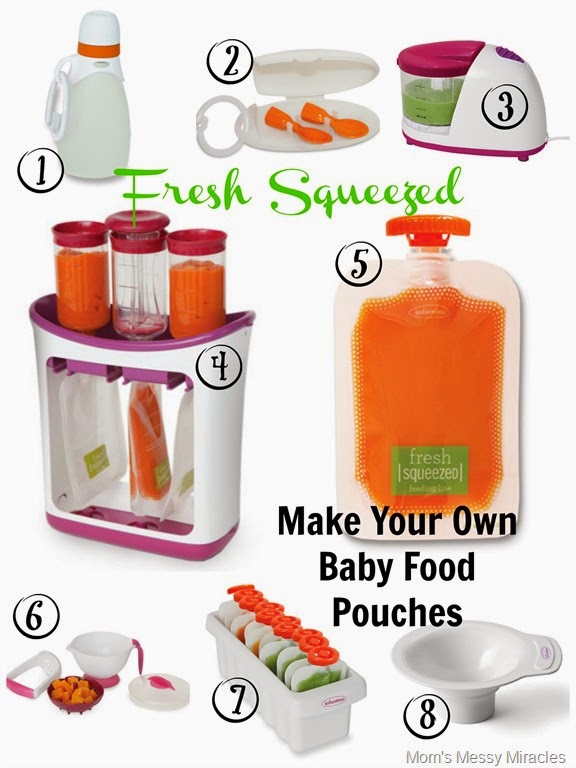 nine0003
nine0003
In accordance with the proposed utility model, the applicants have made a disposable bag for feeding babies.
Food grade polyethylene was used as the material. As a means of indicating the temperature, a film thermal indicator was used, which was made in the form of three parallel strips equidistant from each other, attached along the entire length outside the container 1. The thermal indicator was chosen so that it had a certain color in the range of 36-40 ° C . When the temperature rises, it changes color to a second color. With a decrease in temperature, it changed color to a third color. Its accuracy was 0.5°C. nine0003
Trial operation of a disposable baby feeding bag has shown that it allows:
- sterile filling with baby food and feeding the baby;
- constantly monitor the temperature of baby food during the preparation of baby food and during feeding;
- register deviations from the required temperature regime in different parts of the container 1 due to the fact that the temperature indication means 6 is made along the entire length of the container 1.
The presence of the temperature display means thus makes it possible to continuously display the temperature of the baby food. All this, ultimately, ensures the implementation of the achieved technical result - an increase in ease of use when feeding babies.
The advantage of using this utility model is that the process of feeding babies becomes very simple. In addition to sterility, anti-colic protection and comfort of the pacifier in the baby's mouth, provided by a disposable bag, it is further simplified to control the required temperature of baby food. nine0003
It is recommended to widely use this utility model in various institutions, at home.
1. A disposable bag for feeding infants, comprising a container of flexible soft material, forming a chamber for receiving baby food and having an opening at one end, sealed with a rigid means adapted for connection with a protective cover or with a nipple, characterized in that that the container of flexible soft material has a means of indicating the temperature of the contents. nine0003
nine0003
2. Disposable bag according to claim 1, characterized in that the means for indicating the temperature of the content is located on the outer surface of the container made of flexible soft material.
3. Disposable bag according to claim 1, characterized in that the means for indicating the temperature of the contents is made in the form of a film thermal indicator.
4. Disposable bag according to claim 3, characterized in that the film thermal indicator is made in the form of three parallel strips equidistant from each other and located along the container of a flexible soft material along the entire length of the container. nine0003
5. Disposable bag according to claim 4, characterized in that the film thermal indicator includes two layers of hermetically laminated film, between which film markers are placed, which react to changes in the temperature of the contents by changing color.
6. Disposable bag according to claim 4, characterized in that the film thermal indicator consists of a layer of a substance that changes color under the influence of temperature.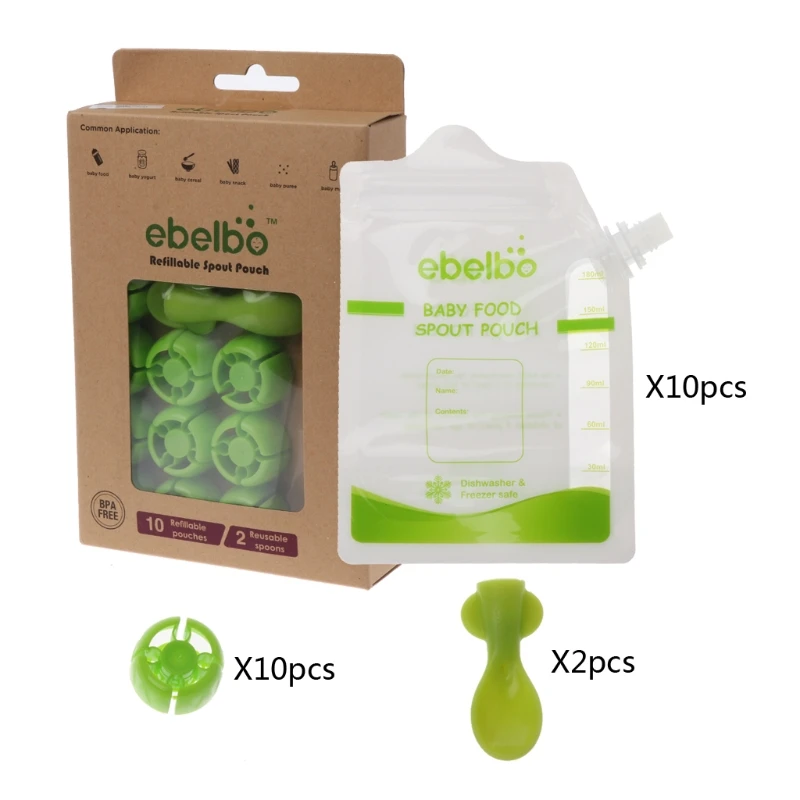
7. Disposable bag according to claim 1, characterized in that the temperature indicator means is made in the form of a fiber evenly located in the walls of the container, which reacts to changes in the temperature of the contents by changing color. nine0003
8. A disposable pouch according to claim 1, characterized in that the temperature indicating means is made in the form of a component that reacts to a change in the temperature of the contents by changing the color added to the material from which the container is made of a flexible soft material.
9. Disposable bag according to claim 4, characterized in that the means for indicating the temperature of the contents is made in the form of three parallel strips of film thermometers equidistant from each other and located along the container from a flexible soft material along the entire length of the container. nine0003
10. A disposable pouch according to claim 4, characterized in that the means for indicating the temperature of the content is adapted to change its color under the influence of temperature, while being able to be in at least three possible color states, one of which corresponds to a reduced temperature of baby food in for feeding the baby, the second of which corresponds to the normal temperature of the baby food for the purpose of feeding the baby, the third of which corresponds to the elevated temperature of the baby food for the purpose of feeding the baby.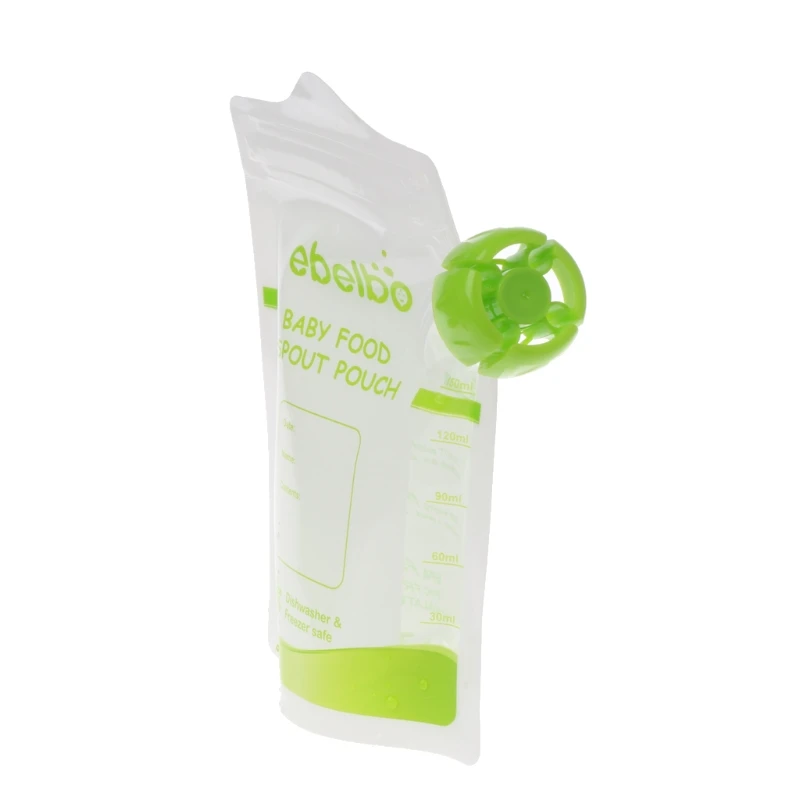 nine0003
nine0003
What is a nibbler for feeding: how to choose a nibbler (photo)
The first months of a baby's life have passed and it's time to introduce him to solid food. Yes, and how you want to pamper him with new delicacies - fresh fruits and vegetables. If the baby has already tasted plant foods in the form of all kinds of purees, and you want to treat him, for example, with a fresh apple or carrot, then the nibbler will become an indispensable and safe assistant in this matter.
Content of article
- 1 Nibbler: what it is, what it is for and how to choose the right nibbler
- 2 What you can put in a nibbler
- 3 How to use a nibbler
- 4 At what age can you give your baby a nibbler
- 5 Safety rules when using a nibbler
- 6 Is it worth accustoming a child to a pacifier
Nibbler: what is it, what is it for and how to choose a suitable nibbler
A baby, without the risk of choking and swallowing a piece of unground food, chews a mesh filled with it of a special invention - a nibbler. Simply put, this is a special mesh for safe chewing, where the product is placed. Using this device helps to teach the baby to chew. It is sometimes called a fruittaker. It is more correct to call the device feeder. The name comes from the English feeder (feeder, feeder, breadwinner). Initially, feeders were sold in Russia under the Nibbler brand of the Nuby company. So the name "nibbler" appeared. nine0003
Simply put, this is a special mesh for safe chewing, where the product is placed. Using this device helps to teach the baby to chew. It is sometimes called a fruittaker. It is more correct to call the device feeder. The name comes from the English feeder (feeder, feeder, breadwinner). Initially, feeders were sold in Russia under the Nibbler brand of the Nuby company. So the name "nibbler" appeared. nine0003
The device helps the child learn a new form of food and allows the mother to find time for other activities or leisure. After all, a daughter or son will be happy to chew a net with a treat, and at this time, mom will have time to cook dinner or enjoy the silence.
Attention: never leave a child with a nibbler unattended.
There are two types of nibblers available in children's stores:
- Nibbler with mesh made of special fabric
- Nibbler with silicone mesh
Both types are available in different colors with ring or wand handle.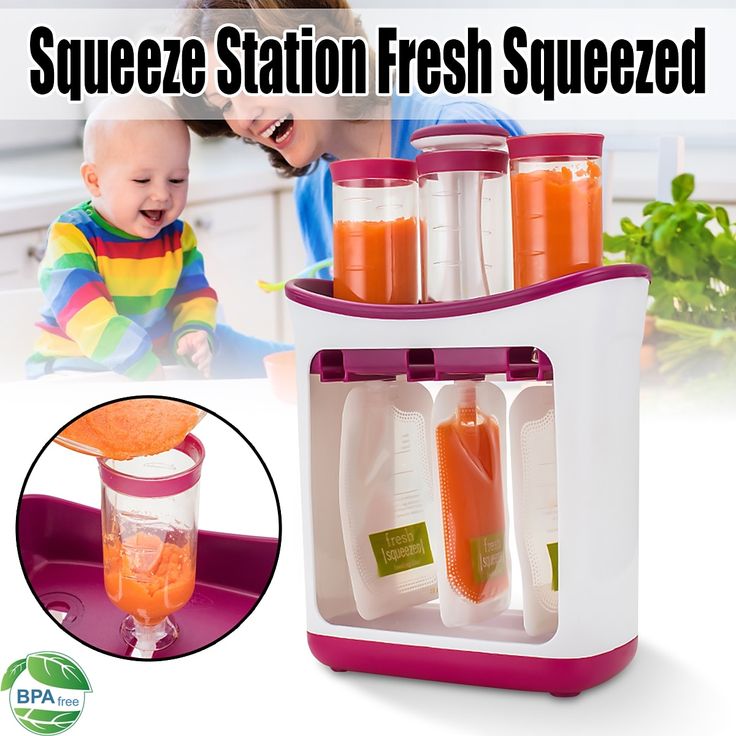 Which one to choose, each mother decides for herself.
Which one to choose, each mother decides for herself.
Feeder with fabric mesh looks like this:
Nibbler consists of a replaceable mesh, fixing ring, ergonomic handle. In some devices, there is an internal lid or a water container built into the handle, which, when cooled, allows you to keep the product fresh longer. The cap-cap is put on the grid itself and tightly adjoins the handle. nine0003
Replacement mesh can be used up to 3 months. After it is recommended to replace it. Replacement nets for nibbler are sold separately or in a set of several pieces. They are white and colored, universal or for a particular brand of nibbler. Mesh parts are made of durable and safe materials, do not contain harmful substances. Replaceable mesh is securely attached to the plastic handle. Pieces of food will not pass through the holes in the grid.
Silicone mesh feeder looks like this:
Silicone feeder (nibbler) It is also made from environmentally friendly materials. This mesh is easy to clean. It is necessary to replace the mesh if it is damaged or purchase a new nibbler. When the first teeth appear, a child chewing with zeal can gnaw through the silicone part.
This mesh is easy to clean. It is necessary to replace the mesh if it is damaged or purchase a new nibbler. When the first teeth appear, a child chewing with zeal can gnaw through the silicone part.
Many moms find the silicone nibbler more practical and comfortable.
What can be put in a nibbler
At a time when our grandmothers were still young mothers, children put some bread in a piece of gauze, wrapped it up and gave it to chew. It was the first kind of mesh for chewing. With the help of a modern nibbler, the baby can enjoy many products:
- Fruit: apple, banana, pear, avocado
- Berries
- Fresh or cooked vegetables: carrots, cucumbers, courgettes, etc.
- A piece of boiled meat
- Drying or bread
Attention: put in the nibbler products suitable for the age of the baby.
How to use the nibbler
Follow these simple steps before giving to your baby:
- After breaking the nibbler into pieces, wash with hot water and soap or a special baby dishwashing detergent
- Rinse thoroughly with boiled water.
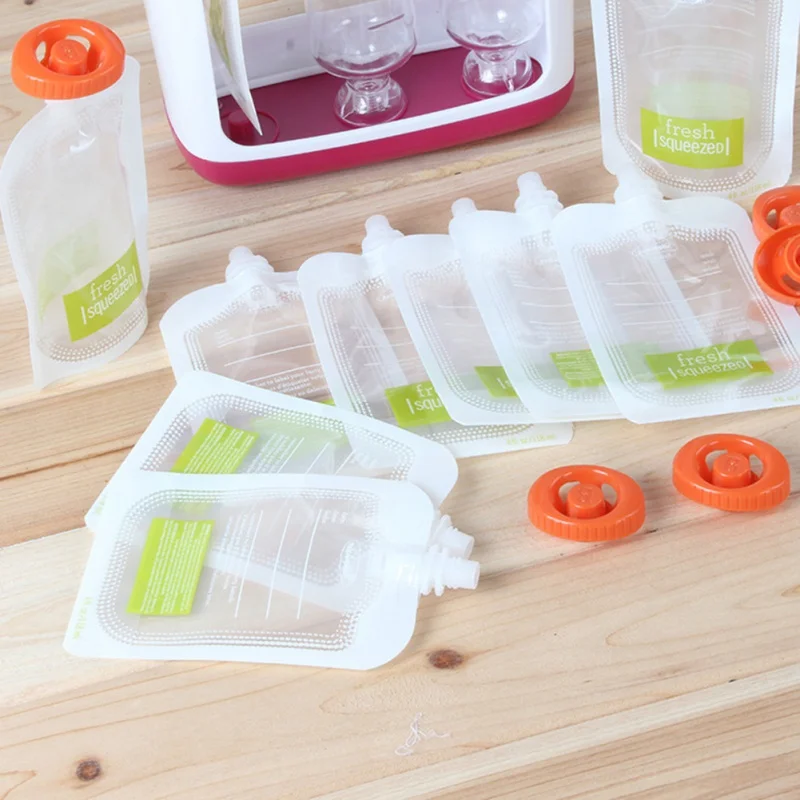 This should be done after each use of the mesh
This should be done after each use of the mesh - Place the prepared food in the net by screwing the lid with handle tightly
- If the fixture has a liquid cooling container, you can first place the nibbler in the refrigerator (not the freezer) for a short while. This will keep the fruit or vegetable fresh longer
- We offer the baby to take the nibbler in the pen, and the net in the mouth. Keeping an eye on the baby does not choke on fruit juice or saliva
- After use, wash every part of the fixture, paying particular attention to the mesh itself
- Cleaned feeder should be dried
Attention: Over time, the fabric of the mesh may darken or stain with berry juice. In this case, replace the grid.
At what age can you give your baby a Nibbler? To avoid allergic reactions, you need to give products that the child has already met in a puree state. nine0003
Traditionally, complementary foods should be started at 6 months of age.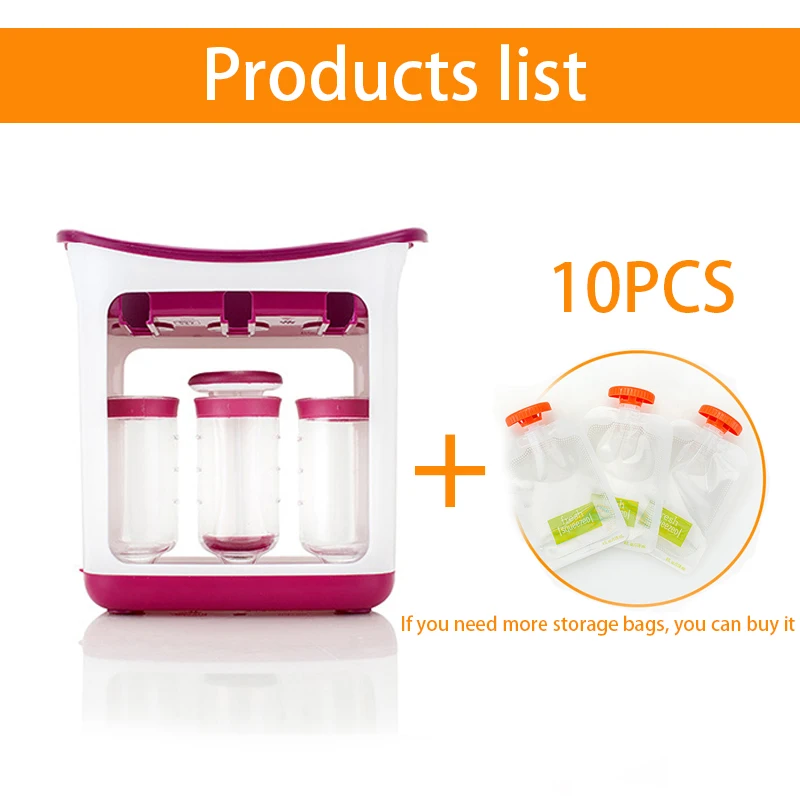 It is this age that is indicated on the packaging of the feeder. However, due to individual characteristics, the doctor recommends that some babies start complementary foods from 4 to 5 months. Such children can start using the nibbler earlier.
It is this age that is indicated on the packaging of the feeder. However, due to individual characteristics, the doctor recommends that some babies start complementary foods from 4 to 5 months. Such children can start using the nibbler earlier.
Tip: when choosing a nibbler for a baby under six months old, it is worth choosing a smaller model. For a 6 month old, buy a larger chew net.
Nibbler Safety Rules
The nibbler is a safety device, but it is important to supervise the baby while using it and follow some safety precautions:
- Do not use chew net as a pacifier or toy
- Nibbler parts should be inspected for signs of wear and damage before each use. It is worth paying attention to the integrity of the grid itself nine0227 If breaks, loose threads and similar problems are found, the mesh must be replaced. Do not give a baby a nibbler with a damaged mesh
Advantages of using a nibbler
Every baby will sooner or later learn to chew food, but a nibbler will speed up this process.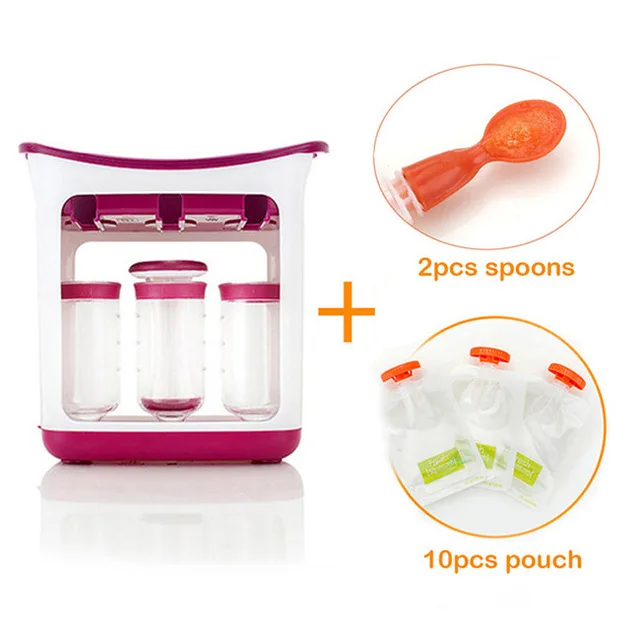 Here are the undoubted advantages of its use:
Here are the undoubted advantages of its use:
- Chewing on the nibbler mesh, the baby is safe, and the parents are calm. He will not choke on a large particle. The baby gnaws on the mesh, turning its contents into mush and sucking out the juice
- In difficult times of teething, the feeder will be a great helper. The braided mesh massages baby's itchy and swollen gums, making it easier for baby teeth to come in. Place chilled fruit slices in the mesh: this will relieve the pain of sore gums in a child
- It is convenient to use the nibbler while walking. Sitting in the stroller, the baby enjoys his favorite fruit, and the mother does not worry that he will choke
- The bright colors and details of the nibbler are pleasing to the eye and attract the attention of the child, bringing joy
- Nibbler is very convenient to use. All parts are easy to clean
Is it worth it to accustom a child to a pacifier
In addition to the nuances of the start of complementary foods, all mothers are interested in the issue of using a pacifier. Should the baby be forced to suck on a pacifier or under no circumstances should it be given? You can often hear from grandmothers and girlfriends that this is extremely harmful. Is it so?
Should the baby be forced to suck on a pacifier or under no circumstances should it be given? You can often hear from grandmothers and girlfriends that this is extremely harmful. Is it so?
Even in ancient times, there were various prototypes of a modern latex or silicone pacifier: pebbles smoothed with water, leather teats from the udder of cows, shreds in honey syrup. They, like the modern pacifier, were designed to satisfy the main reflex of the baby - the desire to suck. The pacifier has nothing to do with feeding the child, but can only give the baby peace of mind, and parents the cherished minutes of silence. For babies, sucking on a pacifier helps them fall asleep because it satisfies the primary sucking reflex. nine0003
Lactation consultants do not recommend giving a pacifier to a baby if the mother is not getting enough milk. Let the baby satisfy the reflex by applying to the mother's breast, thereby stimulating lactation. Most pediatricians around the world have nothing against a pacifier for babies in the first six months of life.